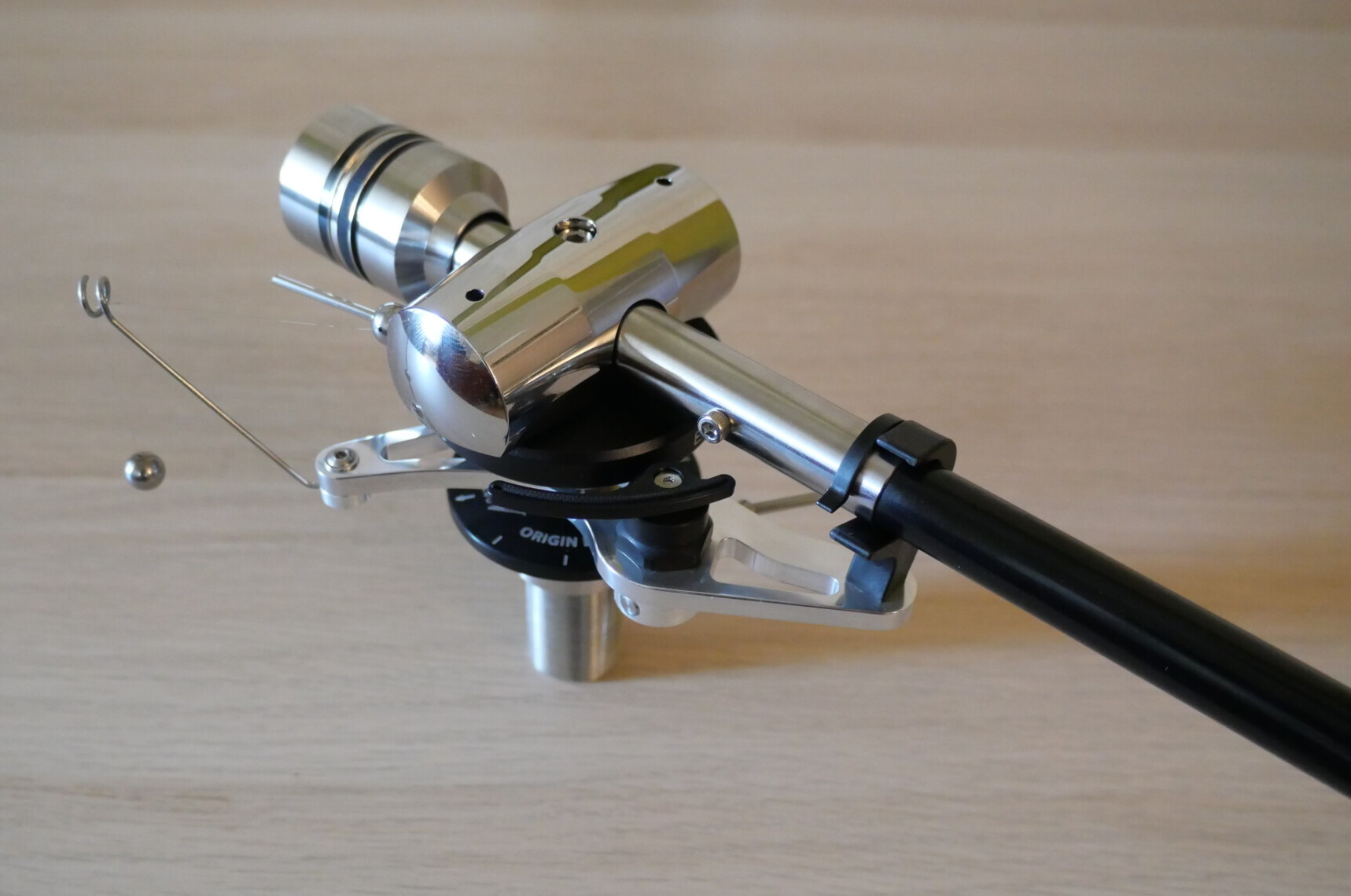
While the SME also used a hybrid bearing combination, its vertical bearings were upward facing knife-edge designs. The Origin Live bearing design uses downward facing needle points, whose significantly lower contact area reduces friction and increases the contact pressure, reducing the possibility/incidence of bearing ‘chatter’. The OL design also pre-dated and differs from the Kuzma implementation, choosing robust, hardened steel rather than jewel cups, combined with tungsten carbide points. The bearings themselves are vertically placed with an exceptionally wide and stable stance. There are also – shock, horror – isolating layers built into their mountings in the broad-shouldered yoke.
The horizontal bearings are far from standard too. Full ceramic races, these precision, low-friction bearings are generally used in applications demanding high rotational speeds, although you also find them where designers are seeking lower-mass, such as bicycles. Neither applies here, which, precision aside, might leave you wondering why OL would choose to use them? Well, the precision is obviously appealing, in terms of maintaining low-friction motion, but there’s an additional benefit. Ceramic bearings can be all-ceramic or hybrid (using ceramic balls and steel races). The OL bearings are all-ceramic units, meaning that both balls and races are ceramic material. The superior sphericity of the balls themselves improves the consistency of contact, but by using a ceramic race, rather than a steel one, the contact area – and thus the energy transfer – between the ceramic elements and the metal sleeve in which they sit is significantly increased and is, perhaps more importantly, thus more even.
The arm-tube and headshell
In true engineering fashion, the arm-tube is simple but effective. Rather than a tapered structure or ultra-exotic materials, it uses a high-grade aluminium alloy tube combined with a carbon layer to deliver predictable resonanant behaviour. The tube itself is specially treated OL are tight-lipped about the precise processes involved), to help relax stress patterns within its structure and carefully interfaced to the machined headshell at one-end and counterweight stub at the other, to further control resonance. Light, rigid and controllable, aluminium tubes have been the mainstay of tone-arm construction for years and, whilst it’s become fashionable to reach for alternative materials and shapes, those solutions often come with a high price-tag and unforeseen side-effects, the musical and the measurable rarely advancing hand-in-hand.

There’s little to say about the machined headshell save that its flat, features sensibly long slots (not always the case) and an elegantly slender finger lift which is attached with a small screw, meaning that you can remove it if you wish. Fixed coupling to the armtube means that there is no azimuth adjustment provided by the headshell: that’s taken care of at the bearing yoke – a far more precise and practical solution.
Dimensions and geometry
The Origin Live tonearms are available in two standard lengths – nominally 9.5” and 12”. The 9.5” arm shares its geometry and mounting arrangements with the Rega tonearms, making them a drop-in replacement for either original (single-bolt) or later (three-bolt) Regas. In practical terms, you are talking a single 23mm mounting hole with a 222mm P2S measurement. The 12” arms use the same mounting hole but the P2S dimension should be 295.6mm.

